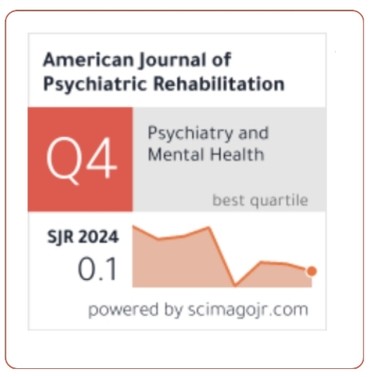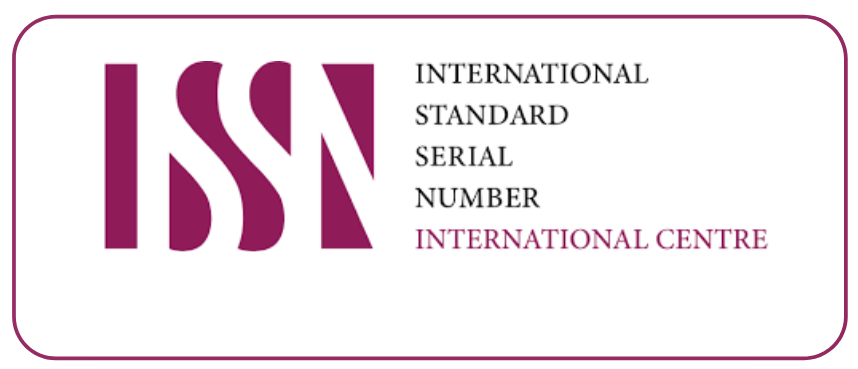Psychiatric Comorbidities and Familial Genetics in Children and Adolescents with Dissociative (Conversion) Disorder: A Cross-Sectional Study from Western Rajasthan.
DOI:
https://doi.org/10.69980/ajpr.v28i5.447Keywords:
Dissociative conversion disorder, adolescents, psychiatric comorbidity, family history, genetic predisposition, K-SADS-PL, FIGSAbstract
Background:
Dissociative (conversion) disorder (DCD) is a complex psychiatric condition characterized by disruptions in consciousness, identity, memory, or perception. It is commonly seen in children and adolescents in clinical settings, often accompanied by psychiatric comorbidities and influenced by familial psychiatric history. This study aimed to assess psychiatric comorbidities and genetic predispositions among pediatric DCD patients in Western Rajasthan.
Methods:
A cross-sectional study was conducted on 80 children and adolescents (ages 6–18) diagnosed with DCD at a tertiary care hospital in Jodhpur, Rajasthan, from July 2021 to July 2022. Psychiatric comorbidities were assessed using the Kiddie Schedule for Affective Disorders and Schizophrenia – Present and Lifetime Version (K-SADS-PL). Family psychiatric history was evaluated through the Family Interview for Genetic Studies (FIGS). Statistical analyses included chi-square and Spearman correlation tests using SPSS-23.
Results:
The mean age was 14.21 years; 82.5% were female. Most belonged to lower socioeconomic status and nuclear families. Convulsion-type DCD was the most common presentation (48.8%). Psychiatric comorbidities were found in 71.2% of participants, with anxiety disorders (25%) being the most prevalent, followed by somatoform (18.8%) and depressive disorders (17.5%). A positive family history of psychiatric illness was found in 58.8% of patients, most commonly anxiety disorders (10%) and DCD (8.8%). A statistically significant association was found between psychiatric comorbidities and positive family psychiatric history (χ² = 18.246, p < 0.001).
Conclusions:
DCD in children and adolescents is frequently associated with psychiatric comorbidities and a family history of mental illness, suggesting both environmental and potential genetic contributions. Early identification and integrated family-based interventions are critical to improving outcomes.
References
1. Coons, Philip M. "Treatment progress in 20 patients with multiple personality disorder." The Journal of nervous and mental disease 174.12 (1986): 715-721
2. Nemzer ED. Somatoform disorders. In: Lewis M, editor. Child and adolescent psychiatry. Baltimore (MD): Williams & Wilkins, 1996. pp. 693–702
3. Goodyer IM. Hysterical conversion reactions in childhood. J Child Psychol Psychiatry 1981;22:179–88.
4. Maisami M, Freeman JM. Conversion reactions in children as body language: a combined child psychiatry/neurology team approach to the management of functional neurological disorders in children. Pediatrics 1987;80:46–52.
5. Turgay A. Treatment outcome for children and adolescents with conversion disorder. Can J Psychiatry 1990;35:585–8.
6. Wyllie E, Friedman D, Rothner AD, Luders H, Dinner D, Morris H, Cruse R, Erenberg G, Kotagal P. Psychogenic seizures in children and adolescents: outcome after diagnosis by ictal video and electroencephalographic recording. Pediatrics 1990;85:480–4.
7. Wyllie E, Glazer JP, Benbadis S, Kotagal P, Wolgamuth B. Psychiatric features of children and adolescents with pseudoseizures. Arch Pediatr Adolesc Med 1999;153:244–8.
8. A Comparative Study On Stressor In Children And Adolescent Patients With Dissociative Disorder And Their Age And Gender Matched Controls In Western Rajasthan. (2022). Journal of Pharmaceutical Negative Results, 13, 2641-2645. https://doi.org/10.47750/pnr.2022.13.S05.406
9. Bowman ES, Markand ON. Psychodynamics and psychiatric diagnoses. Am J Psychiatry. 1996;153:57-63.
10. Tezcan E, Atmaca M, Kuloglu M, Gecici O, Buyukbayram A, Tutkun H. Dissociative disorders in Turkish inpatients with conversion disorder. Comprehensive Psychiatry. 2003 Aug 31;44(4):324-30.
11. Whitlock M., Bourguet D. 2000. Factors affecting the genetic load in Drosophila synergistic epistasis and correlations among fitness components, Evolution 54:5
12. Kaplan and Sadock: Comprehensive Text Book Of Psychiatry,Dissociative
13. Kaufman J, Birmaher B, Brent D, Rao U, Flynn C, Moreci P, Williamson D, Ryan N. 1997. Schedulefor affective disorders and schizophrenia for school age children-present and lifetime version (K-SADS-PL): Initial reliability and validity data. J Am Acad Child Adolesc Psychiatry 36(7):980–98Disorders.vol1
14. Nurnberger, J. I., Blehar, M. C., Kaufmann, C. A., York-Cooler, C., Simpson, S. G., Harkavy-Friedman, J., ... & Reich, T. (1994). Diagnostic Interview for Genetic Studies: rationale, unique features, and training. Archives of General Psychiatry, 51(11), 849-859. https://doi.org/10.1001/archpsyc.1994.03950110022002
15. Maxwell, M. E. (1992). Family Interview for Genetic Studies (FIGS): Manual for FIGS. Bethesda, MD: Clinical Neurogenetics Branch, Intramural Research Program, National Institute of Mental Health.
16.
Maloney, T., Machamer, J., & McLean, P. (2002). Age of onset and clinical characteristics of conversion disorder: A retrospective study. Journal of Nervous and Mental Disease, 190(8), 573-576. https://doi.org/10.1097/01.NMD.0000020930.01234.77
17. Grattan-Smith, P. J., Silove, N., & Matthews, N. (1990). Childhood conversion disorder: Clinical features and outcome. Australian & New Zealand Journal of Psychiatry, 24(1), 25-29. https://doi.org/10.3109/00048679009075696
18. Pehlivantürk, B., Özkara, C., & Baykan, B. (2000). Age of onset and clinical features of conversion disorder in children and adolescents. Seizure, 9(8), 574-577. https://doi.org/10.1053/seiz.2000.0492
19. Ljunberg, L. (1957). Hysteria: A clinical and sociological study. Acta Psychiatrica Scandinavica, 32(Suppl 115), 1-144.
20. Raskin, D. C., Marton, P., & Handler, L. (1966). Gender differences in conversion disorder. Psychosomatics, 7(3), 231-235.https://doi.org/10.1016/S0033-3182(66)71457-8
21. Stefansson, C. G., Sveinsson, O. G., & Sigurdsson, J. A. (1976). The sex ratio in conversion disorder. Acta Psychiatrica Scandinavica, 54(3), 217-223. https://doi.org/10.1111/j.1600-0447.1976.tb00836.x
22. Veith, I. (1965). Sociodemographic aspects of hysteria. American Journal of Psychiatry, 122(10), 1160-1165.
https://doi.org/10.1176/ajp.122.10.1160
23. Weinstein, R. S., & Horton, J. A. (1969). Sociodemographic factors in hysteria: a clinical review. Psychosomatics, 10(3), 296-304.https://doi.org/10.1016/S0033-3182(69)71546-7
24. Lazare, A. (1981). Sociocultural factors in conversion disorder. Journal of Nervous and Mental Disease, 169(7), 414-420.https://doi.org/10.1097/00005053-198107000-00004
25. Folks, D. G., Fernandez, A. R., & Reardon, J. J. (1984). Rural-urban differences in somatization and conversion symptoms. American Journal of Psychiatry, 141(1), 101-104.https://doi.org/10.1176/ajp.141.1.101
26. Chandrasekhar, C. R., & Kumar, K. P. (2010). Family structure and health-seeking behavior among conversion disorder patients: A cross-sectional study. Indian Journal of Psychiatry, 52(2), 150-154. https://doi.org/10.4103/0019-5545.64594
27. Singh, S., & Sharma, S. (2014). Clinical profile of patients with dissociative convulsions in a tertiary care center. Indian Journal of Psychiatry, 56(1), 35-39.https://doi.org/10.4103/0019-5545.124718
28. Kanaan, R. A. A., & Wessely, S. (2010). Conversion disorders: what is the prognosis? Psychological Medicine, 40(5), 1-9.https://doi.org/10.1017/S0033291709991274
29. Bowman, E., & Markand, O. N. (1996). Psychiatric comorbidities in patients with conversion disorder. Psychosomatics, 37(4), 333-339.https://doi.org/10.1016/S0033-3182(96)71336-3
30. Kuloglu, M., Atmaca, M., & Tezcan, E. (2003). Comorbidity of depressive and anxiety disorders in conversion disorder. Journal of Psychosomatic Research, 54(4), 345-349. https://doi.org/10.1016/S0022-3999(02)00407-3
31. Kaygisiz, Z., & Alkin, T. (1999). Psychiatric comorbidity in conversion disorder: A clinical study. European Psychiatry, 14(2), 97-101. https://doi.org/10.1016/S0924-9338(99)80325-9
Downloads
Published
Issue
Section
License
Copyright (c) 2025 American Journal of Psychiatric Rehabilitation

This work is licensed under a Creative Commons Attribution 4.0 International License.
This is an Open Access article distributed under the terms of the Creative Commons Attribution 4.0 International License permitting all use, distribution, and reproduction in any medium, provided the work is properly cited.









